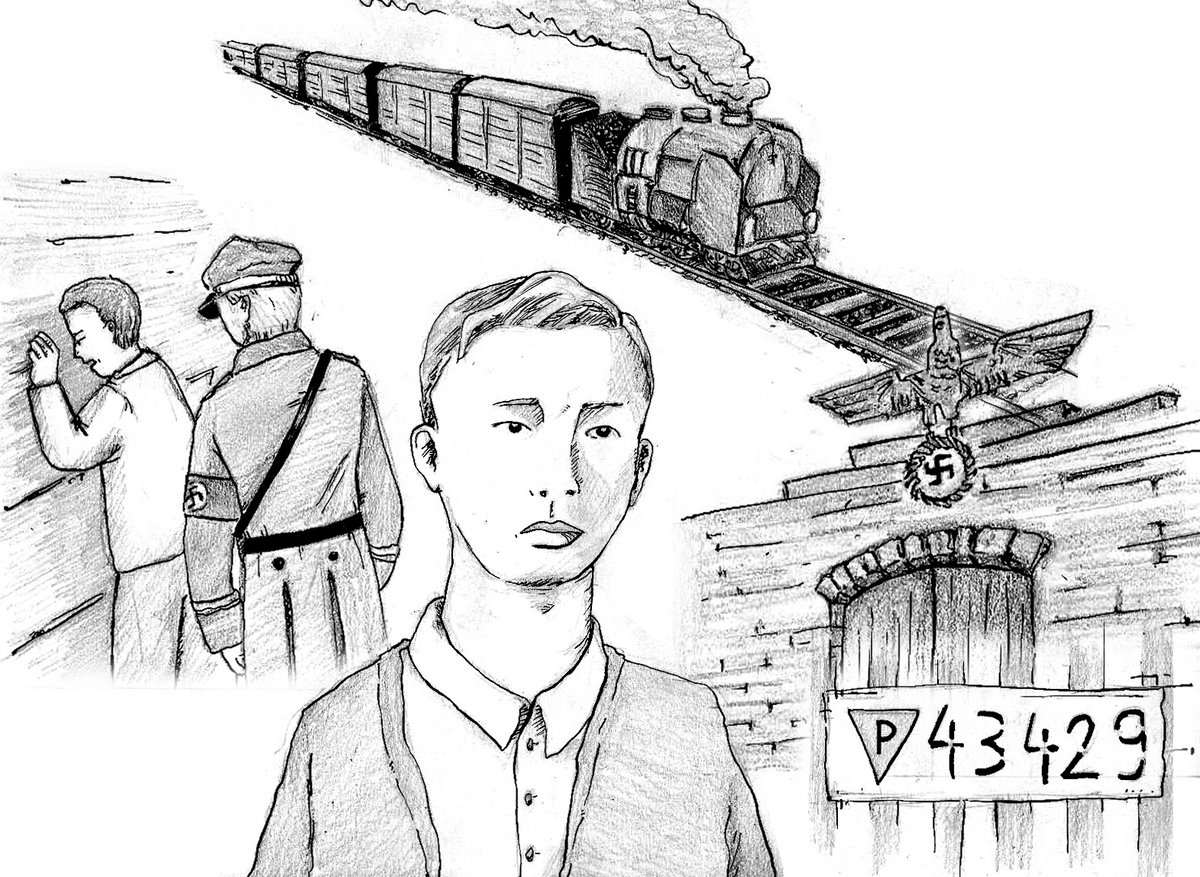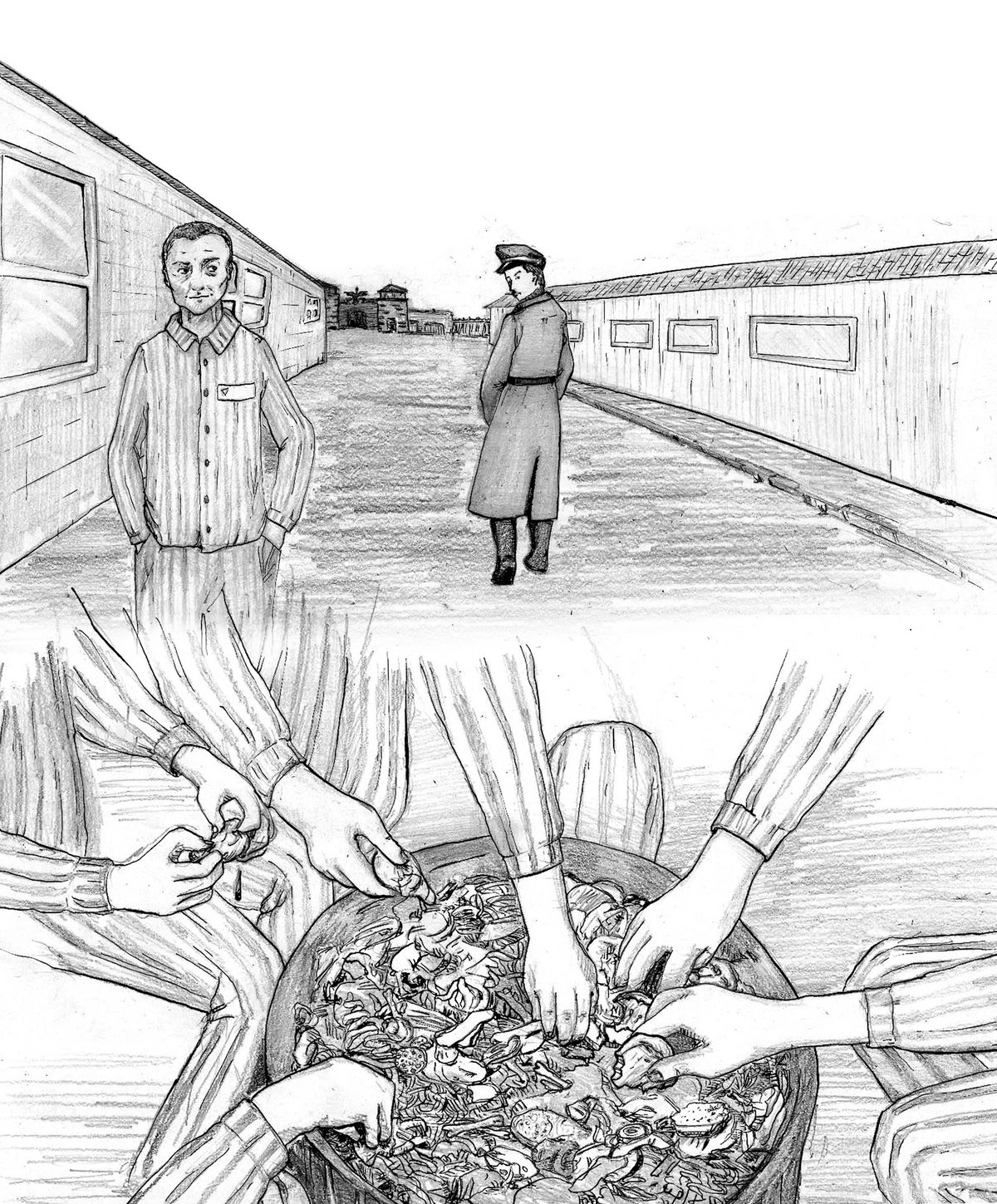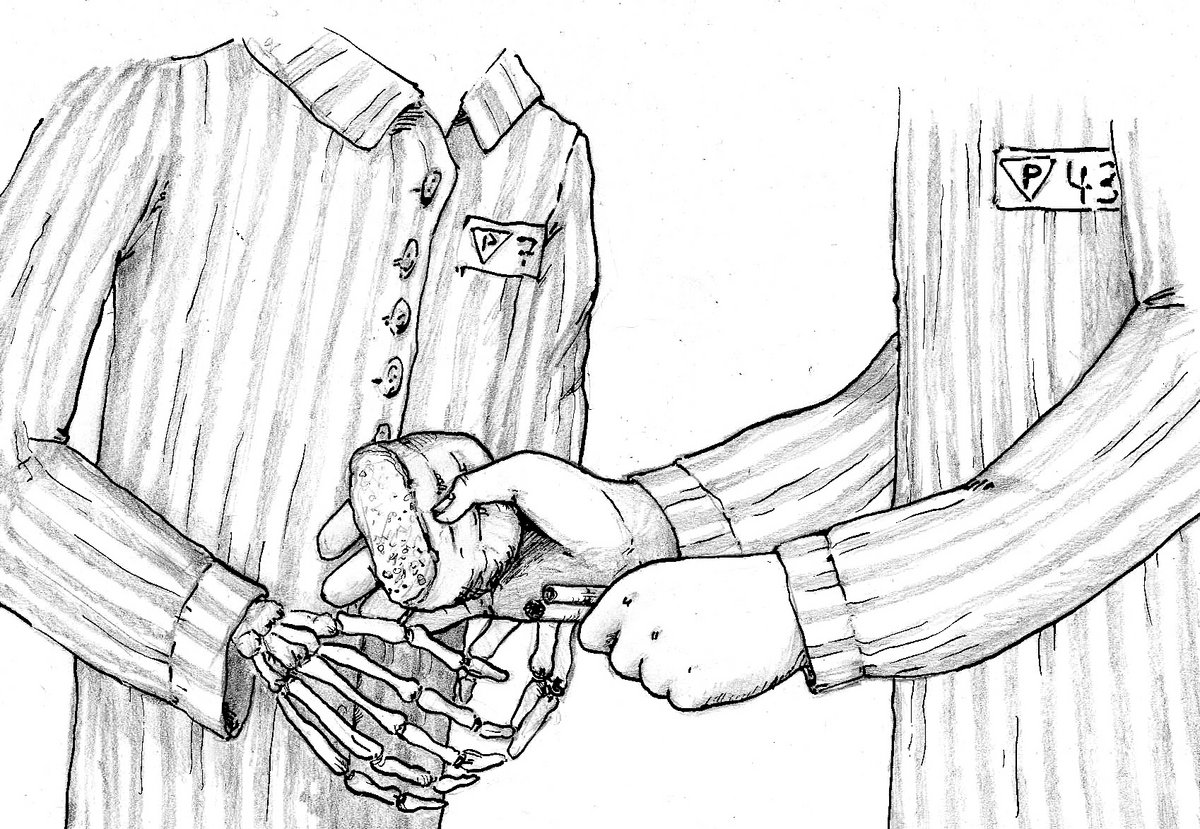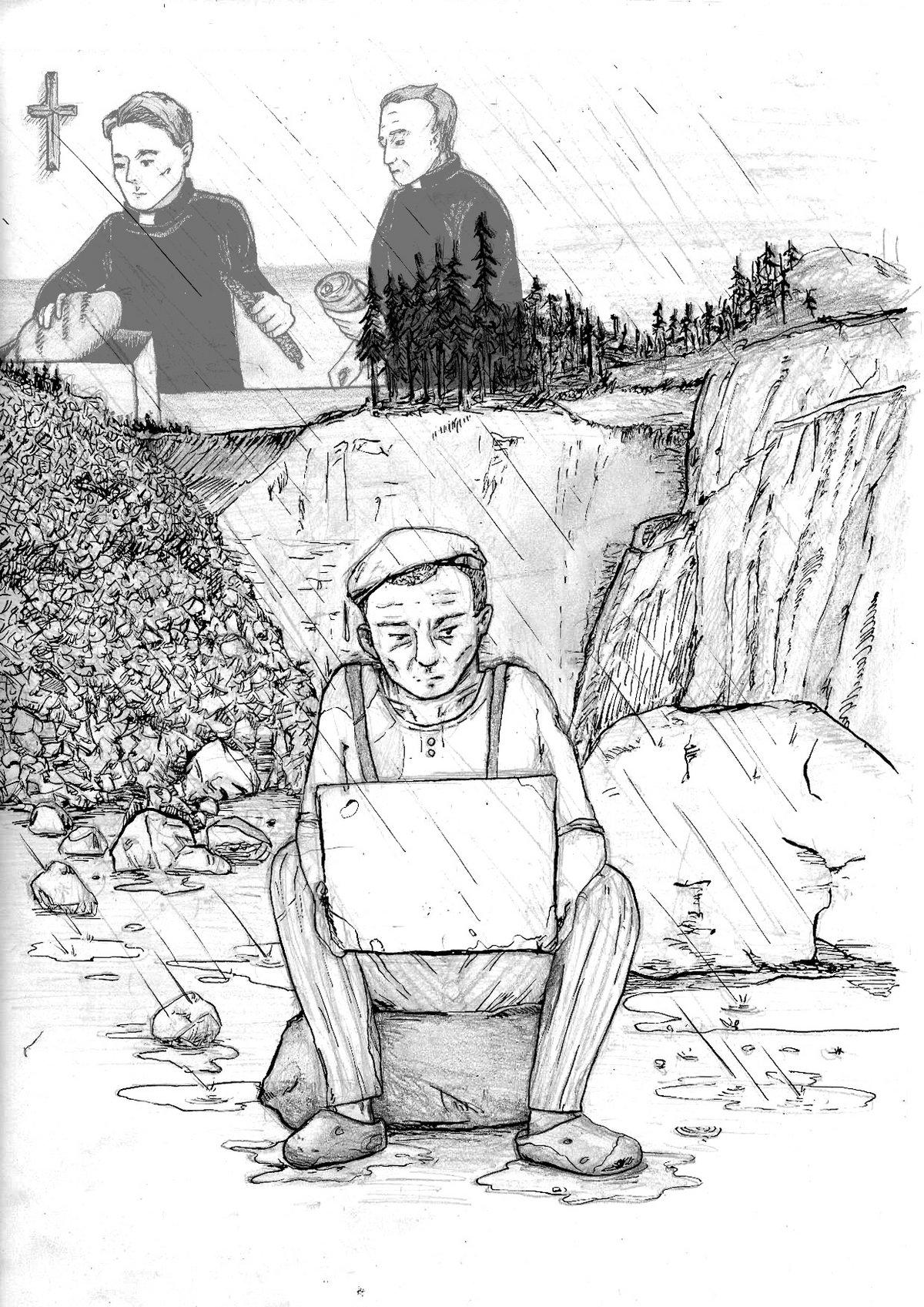In 1938, in a small town in Upper Austria, one of the many Nazi concentration camps was constructed. It was known as the Mauthausen concentration camp. It existed from 1938 to 1945. The camp was run and guarded by the SS. The people who were imprisoned here came from many countries in Europe: Poland, Russia, France, Italy, Germany, Austria and others. They were political opponents, belonged to marginalised groups (e.g. ‘criminals’, ‘asocials’) or were persecuted for anti-Semitic and racist reasons (e.g. Jews). Most of the prisoners were men, but there were also women and children.
In the Mauthausen quarry, the prisoners carried out hard forced labour. In the more than 40 subcamps (Gusen, Steyr, Linz, Ebensee, Vienna...), they were deployed in the arms industry. People lived in overcrowded accommodation. They were not given enough food and clothing, and they starved and died of diseases. SS men beat many prisoners to death, shot them or murdered them in the gas chamber at Mauthausen. In total, almost 200,000 people were imprisoned at Mauthausen and its subcamps. Half of them lost their lives.
The Mauthausen concentration camp was on a hill and could be seen for miles around. Many people were involved with the camp: they worked there, brought deliveries or knew SS men. Almost everyone knew about the death camp. Often, the SS men committed the crimes in full view of the population. On 5 May 1945, the Mauthausen concentration camp was liberated by US troops.
Here, you will read the story of a person who was connected with the Mauthausen concentration camp.
Stanisław Grzesiuk
Text: Christian Angerer, Bernhard Mühleder – Illustration: Natalie Sandner

Stanisław Grzesiuk is born in 1918 and grows up in Warsaw, the capital of Poland. Although his family has little money, the three children are allowed to learn to play the mandolin. Stanisław does an apprenticeship as an electrical mechanic.
When the German Wehrmacht invades Poland on 1 September 1939, the Second World War begins. Stanisław Grzesiuk trades in goods stolen from factories that have been seized by the Germans. In early 1940, he is arrested and sent to a farm in Germany to work as a forced labourer. After attempting to escape, he is transferred to the Dachau concentration camp near Munich. He volunteers to be transported to the Mauthausen concentration camp because he thinks the conditions will be better there. On 16 August 1940, Stanisław Grzesiuk arrives in Mauthausen and is registered with the prisoner number 43429 and has to wear a red triangle with a ‘P’ (for ‘Pole’).
He uses both courage and cunning in order to survive and to avoid the most brutal forms of forced labour. Grzesiuk tries to get assigned to labour detachments in which he can pretend to work. He walks quickly and purposefully through the camp, and if an SS man or Kapo stops him, he says: ‘Work unit’ or ‘Kapo’ and makes a hand gesture to indicate that he has to finish an urgent task. The trick is usually successful, and he is allowed to carry on, even if he is sometimes kicked.

Grzesiuk also uses a trick to get extra food. The SS men tip their leftovers into a rubbish bin, which is emptied the following day. On several occasions, Grzesiuk and some fellow prisoners manage to get hold of one of these bins. Hidden in a cellar, they wolf down the remains of the SS provisions, which include bread, potatoes and pieces of meat.
Stanisław Grzesiuk and his friends help each other and show solidarity. But he also sometimes helps the so-called ‘Muselmänner’, as completely emaciated and exhausted prisoners are known. He gives bread and cigarettes to these people, who are on the brink of death.

In early 1941, when Grzesiuk is transferred to the nearby Gusen concentration camp, his living conditions become even worse. In Gusen, he is no longer able to avoid hard labour in the quarries. In 1943, he is dangerously frail. He is saved by the food packages that concentration camp prisoners are allowed to receive from home. Grzesiuk is sent bread, jam, fruit, garlic and other foods by a Polish priest called Szubert. In late 1940, Szubert was released from the Mauthausen concentration camp, which he survived because Grzesiuk looked after him.

In the Gusen concentration camp, some prisoners, most of them Polish, manage to form a choir, an orchestra and various smaller music ensembles. In the evenings and on Sundays there are concerts. Through music, the prisoners build their self-esteem, solidarity and will to survive. The SS tolerates this musical activity and even lets the musicians and singers perform, such as at the official Christmas celebrations in the camp. In 1943, Grzesiuk puts together a small music group with seven instruments. The band is rewarded by other prisoners for its performances with food and cigarettes. They often play the popular ‘March of the Gusen Prisoners’, which was composed in the camp.

In 1944, Grzesiuk spends a few months working in the tunnels of St. Georgen an der Gusen. Prisoners from the Gusen concentration camp are forced to dig an enormous tunnel system, known as ‘Bergkristall’, for an underground aircraft factory. Thousands die as a result of this back-breaking labour. In August 1944, Grzesiuk is assigned to easier work in the factory halls where Gusen prisoners have to produce weapons for the company Steyr-Daimler-Puch AG. This work in the arms industry means improved living conditions for some prisoners. But for most, deployed in the tunnel-building project, chances of survival are significantly lower.
In the final weeks of the Gusen concentration camp, there are mass deaths and the SS murder thousands of sick and frail prisoners. On 5 May 1945, the camp is liberated by the US Army.
Stanisław Grzesiuk returns to Warsaw in summer 1945. In 1946, he marries Czesława Żórawska; they have two children. Since his childhood – when his father was member of the Polish Socialist Party – he has believed in socialism and communism. In the Communist Republic of Poland, he has a modest professional and political career.

But the years in the concentration camp have left their mark on Grzesiuk. He contracted tuberculosis in the camp. He writes his first book about his experiences under the Nazis, ‘Five Years in Concentration Camps’ in 1958 during a stay in hospital. Former fellow prisoners are critical of the way he talks so candidly about the reality of the camp and his use of many real names. Two further books follow.
In 1959, he begins to sing again, accompanying himself on the mandolin. His performances of songs from the pre-war period bring him fame as a Warsaw folk singer.
Stanisław Grzesiuk dies in Warsaw in 1963. A street in the Czerniaków district of the city bears his name.
- 1918 Stanisław Grzesiuk is born; he spends his childhood in Warsaw
- 11 November, end of the First World War
- 1932 He trains as an electrical mechanic
- 1933 30 January, Adolf Hitler becomes Reich Chancellor in Germany
- 1938 12 March, ‘Anschluss’ (‘Annexation’) of Austria to Nazi Germany
- 8 August, construction starts on the Mauthausen concentration camp
- 1939 1 September, start of the Second World War
- December, Construction begins on the Gusen concentration camp
- 1940 He is arrested and transferred to Germany, where is a forced labourer on a farm
- Imprisonment in the Dachau concentration camp
- Transfer to the Mauthausen concentration camp
- 1941 Grzesiuk is transferred to the Gusen concentration camp
- 1944 He carries out forced labour in ‘Bergkristall’ tunnel system in St. Georgen an der Gusen
- 1945 Polish uprising in Warsaw against the German occupation
- 5 May, Mauthausen concentration camp is liberated by the US Army
- 8 May, Nazi Germany surrenders; end of the Second World War in Europe
- Grzesiuk returns to Warsaw
- 1958 He publishes a book about his concentration camp experiences
- 1963 Stanisław Grzesiuk dies in Warsaw
Further reflection in groups...
The text describes the living conditions of the prisoners in the concentration camp. What helps Stanisław Grzesiuk to survive?
In the Mauthausen concentration camp, Stanisław Grzesiuk has to wear the prisoner number 43429 and a red triangular badge. What meaning do the prisoner number and the badge have for the prisoners and what meaning do they have for the SS?
Music is important to Stanisław Grzesiuk throughout his life. Find the drawing in the biography that shows this. Think about the meaning that making music might have had for him in the concentration camp.
Polish people made up the largest group of prisoners in Mauthausen. In the Memorial Park, there’s a Polish memorial. Ask where it is on your visit to Mauthausen. Describe the memorial.